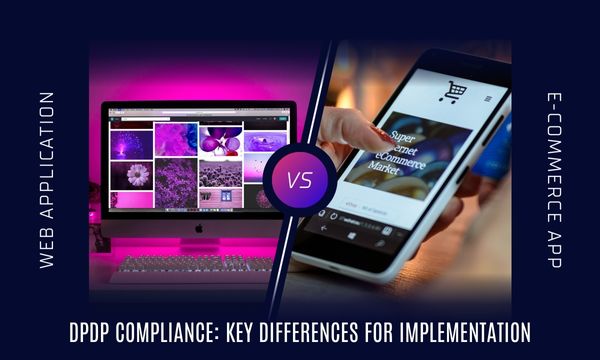
As cyberattacks become more sophisticated, artificial intelligence (AI) transforms how organizations conduct penetration testing. AI-driven testing may promise faster vulnerability detection, automation of repetitive tasks, and deeper insights into potential security flaws. But does AI truly enhance the effectiveness of penetration testing, or are there limitations businesses should be aware of?
In this blog, we’ll explore how AI is reshaping the landscape of security testing, the benefits and drawbacks of AI-driven penetration testing, and why industries like SaaS and the government should pay attention to this emerging trend.
How AI Is Changing the Penetration Testing Landscape
1. Speed and Efficiency
One of the most significant advantages of using AI in penetration testing is its ability to automate tasks that would otherwise require manual intervention. AI-powered tools can rapidly scan networks, applications, and systems for vulnerabilities, identifying weaknesses faster than human testers.
* Automated scanning: AI algorithms can sift through massive amounts of data, flagging potential issues at a scale that would be impossible manually.
* Reduced testing time: What used to take days or weeks can now be accomplished in hours, allowing organizations to respond to security issues more quickly.
For industries like SaaS, where applications are continually updated, the ability to quickly and efficiently test new releases is invaluable.
2. Advanced Threat Detection
AI excels at identifying patterns and anomalies that may indicate security vulnerabilities. It can simulate complex attack scenarios and predict how the attackers might exploit the weaknesses of any system. This is particularly useful in detecting zero-day vulnerabilities or new threats that traditional security measures might miss.
* Behavioral analysis: AI can analyze system behaviours over time, identifying subtle changes that may suggest an ongoing attack.
* Machine learning models: As AI tools analyze more data, they become better at recognizing unusual activities or attack vectors, making future tests even more accurate.
In government agencies, where sensitive data and critical infrastructure are the constant targets, AI’s ability to identify emerging threats can be a game-changer.
3. Enhanced Data Analysis
AI systems are adept at processing large volumes of data, offering more granular insights into an organization’s security posture. By analyzing historical data and ongoing activities, AI tools can provide actionable insights that traditional testing might overlook.
* Predictive analytics: AI uses historical data to forecast potential vulnerabilities and recommend proactive measures.
* Contextual recommendations: Based on the data, AI can offer specific, actionable solutions to fix vulnerabilities, speeding up remediation.
This is especially relevant for SaaS companies, where ensuring platform reliability and uptime is critical for customer retention.
Pros of AI-Driven Penetration Testing
1. Scalability
AI tools can scale to assess large and complex infrastructures quickly, making them ideal for cloud environments or distributed networks used by SaaS providers. As your network grows, AI can efficiently analyze more endpoints without a proportionate increase in resources or time.
2. Continuous Testing
In fast-paced sectors like SaaS or e-commerce, security cannot be a one-time activity. AI allows for continuous testing by automating tests at regular intervals, ensuring that new vulnerabilities are caught as they emerge. This also ensures a proactive security stance, rather than reacting to breaches after the attack.
3. Consistency and Objectivity
Human testers may overlook certain issues due to bias or fatigue. AI ensures consistent testing, following the same protocols every time, thus leaving no room for human error or oversight. AI evaluates vulnerabilities based on data without any subjective human interference, providing a clearer risk picture.
Cons of AI-Driven Penetration Testing
1. Limited Human Intuition
While AI excels in data processing and pattern recognition, it lacks the creativity and intuition of human testers. A skilled human pentester might recognize an unusual system configuration as a vulnerability that an AI system could miss. This is particularly important when dealing with sophisticated attacks or custom-built systems. There are chances that AI can miss vulnerabilities that require an understanding of the specific environment or business processes.
2. False Positives and Negatives
AI tools may produce false positives, flagging issues that aren’t actual vulnerabilities. On the other hand, they might generate false negatives, failing to detect legitimate security flaws.
SaaS companies or government agencies operating critical infrastructure can’t afford the risks associated with such errors, as undetected vulnerabilities could lead to catastrophic breaches.
3. High Initial Investment
While AI offers long-term benefits, the initial investment in AI-driven penetration testing tools can be high. For small businesses or startups, this could be a significant financial challenge. Additionally, organizations will need skilled personnel to manage and interpret AI-driven testing results.
Use Cases: AI in Industry-Specific Penetration Testing
1. SaaS Platforms
SaaS companies often deploy new features and updates frequently, which can introduce new vulnerabilities. AI-driven penetration testing allows for automated, ongoing testing, ensuring that vulnerabilities are identified as soon as new code is deployed.
* Key Benefit: Speed and scalability—AI can test new updates without disrupting services.
2. Government Agencies
Government agencies face constant threats from Advanced Persistent Threats (APTs) and nation-state actors. AI can help simulate these advanced attacks, providing deeper insights into vulnerabilities that could affect critical infrastructure or sensitive data.
* Key Benefit: Predictive analysis—AI can identify emerging threats before they become critical security issues.
3. Healthcare Providers
In the healthcare sector, protecting patient data is paramount. AI can help ensure compliance with regulations like HIPAA by automating regular penetration tests and identifying vulnerabilities that could compromise electronic health records (EHRs).
* Key Benefit: Regulatory compliance—AI can continuously monitor and test for vulnerabilities that may lead to non-compliance.
Conclusion: Is AI-Driven Penetration Testing Right for Your Business?
AI is undoubtedly transforming the world of penetration testing, offering faster, more scalable, and data-driven solutions. However, it’s essential to recognize and not ignore its limitations. While AI-driven tools can automate many tasks and identify vulnerabilities, they cannot replace the nuanced judgment of a skilled human tester.
For industries like SaaS or government agencies—where security is paramount—AI can serve as a valuable tool for continuous testing and advanced threat detection. However, organizations should aim for a hybrid approach, combining AI capabilities with human expertise to get the most comprehensive results. AI should be used to equip the human workforce to get better and faster results.



